- Administrator
- Albums and Singles
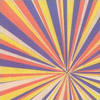 So I'm in a local favorite bistro having dinner with my parents,wearing my Mogwai T-shirt, and I'm on my way to the bathroom when theguitarist for the in-house jazz combo comes up to me. "Mogwai!" hesays. "My son's in a band, and they get compared to Mogwai a lot. Youshould check them out!" Who are they? "Yume Bitsu," he says, "on KRecords." I leave after dinner, never bothering to check out the band.A few days later, what should arrive in my mailbox as a new CD toreview? Yume Bitsu on K Records. A thought suddenly occurs to me: "Am Isomehow linked to this band karmically? Am I supposed to review thisband to complete some bizarre circle of events that will bring greatfame and fortune to some small family in eastern Milwaukee? Have I lostmy mind?" I chose the latter, but decided to review the record anyway.Yume Bitsu are sound collage artists. They get compared to Mogwai a lotprobably because they create epic instrumentals with rock instruments.It is NOT a fair comparison. To start with, Yume Bitsu, on this releaseparticularly, create their music vastly through recorded improvisation,where Mogwai are very structured, right down to each loud-soft-loudmoment. Secondly, Mogwai are Scottish. Yume Bitsu? Not Scottish. Andlastly, Yume Bitsu, on this release, chose not to name the tracks.Mogwai takes great pride in naming their tracks, I assure you. Allkidding aside, this record is really impressive. It's halfway betweenall out drone rock, and laborious post-rock. This release isparticularly disparate, though the band has always been difficult toassign to a specific genre. Each track, though, seems to take on a mindof its own, with the players merely translators for the higher power.Fitting, it seems, as the band claims the music comes from a channel ofenergy that is greater than the sum of the musicians. Guitars,keyboards, and drums blend and mate beautifully, creating music that isnot unlike Landing and Windy and Carl (name-watchers: if you like thosebands BUY THIS RECORD). I found myself constantly blocking the samethought in my head: "IT NEEDS STRUCTURE! IT NEEDS MORE STRUCTURE!" No,it doesn't. This music is just fine as it is, despite the fact that oneof its members' father tried to push it on me in a local bistro.
So I'm in a local favorite bistro having dinner with my parents,wearing my Mogwai T-shirt, and I'm on my way to the bathroom when theguitarist for the in-house jazz combo comes up to me. "Mogwai!" hesays. "My son's in a band, and they get compared to Mogwai a lot. Youshould check them out!" Who are they? "Yume Bitsu," he says, "on KRecords." I leave after dinner, never bothering to check out the band.A few days later, what should arrive in my mailbox as a new CD toreview? Yume Bitsu on K Records. A thought suddenly occurs to me: "Am Isomehow linked to this band karmically? Am I supposed to review thisband to complete some bizarre circle of events that will bring greatfame and fortune to some small family in eastern Milwaukee? Have I lostmy mind?" I chose the latter, but decided to review the record anyway.Yume Bitsu are sound collage artists. They get compared to Mogwai a lotprobably because they create epic instrumentals with rock instruments.It is NOT a fair comparison. To start with, Yume Bitsu, on this releaseparticularly, create their music vastly through recorded improvisation,where Mogwai are very structured, right down to each loud-soft-loudmoment. Secondly, Mogwai are Scottish. Yume Bitsu? Not Scottish. Andlastly, Yume Bitsu, on this release, chose not to name the tracks.Mogwai takes great pride in naming their tracks, I assure you. Allkidding aside, this record is really impressive. It's halfway betweenall out drone rock, and laborious post-rock. This release isparticularly disparate, though the band has always been difficult toassign to a specific genre. Each track, though, seems to take on a mindof its own, with the players merely translators for the higher power.Fitting, it seems, as the band claims the music comes from a channel ofenergy that is greater than the sum of the musicians. Guitars,keyboards, and drums blend and mate beautifully, creating music that isnot unlike Landing and Windy and Carl (name-watchers: if you like thosebands BUY THIS RECORD). I found myself constantly blocking the samethought in my head: "IT NEEDS STRUCTURE! IT NEEDS MORE STRUCTURE!" No,it doesn't. This music is just fine as it is, despite the fact that oneof its members' father tried to push it on me in a local bistro.
samples:
Read More
- Administrator
- Albums and Singles
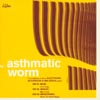 Pulling off a themed compilation with a number of better-known musicalartists is not the easiest thing to do, so I commend this new label,Mobile, for piecing together something this consistent. The themebasically rides a current trend in electronic music, incorporating theusage of accordion (historically referred to as an asthmatic worm) andthe simpler, yet similar sounding melodica. Unfortunately, of thetwelve tracks, only two (Dntel and Markus Nikolai) are exclusive tothis compilation. While I clearly love Múm, I'm wondering who would beshopping for this compilation who hasn't heard this album track from'Yesterday Was Dramatic', but in all fairness, it is quitecomplimentary to the rest of the compilation, which includes commonunderground electro-celebs Atom TM, Matthew Herbert's Doctor Rockit,Ekkehard Ehlers (as Maerz with Albrecht Kunze), Burnt Friedman &Jakt Liebezeit and Gonzales. Unexpected treats include the pleasanthead-nod from Sensorama, a gipsy folk-esque song from a band simplytitled Hey, and a French film score-mimicing contribution from GotanProject. Jimmy Tamborello of Dntel sounds like he recruited that singerfrom Casiotone for the Painfully Alone for a gorgeous track whichperfectly compliments last year's stunning Dntel album on Plug Researchand Wechsel Garland incorporate the star instrument into a laid-backorgan, vibe, bass and drum jam, making me wish I knew more about thisartist. It might not be the most original compilation you'll find butit sure does sound good.
Pulling off a themed compilation with a number of better-known musicalartists is not the easiest thing to do, so I commend this new label,Mobile, for piecing together something this consistent. The themebasically rides a current trend in electronic music, incorporating theusage of accordion (historically referred to as an asthmatic worm) andthe simpler, yet similar sounding melodica. Unfortunately, of thetwelve tracks, only two (Dntel and Markus Nikolai) are exclusive tothis compilation. While I clearly love Múm, I'm wondering who would beshopping for this compilation who hasn't heard this album track from'Yesterday Was Dramatic', but in all fairness, it is quitecomplimentary to the rest of the compilation, which includes commonunderground electro-celebs Atom TM, Matthew Herbert's Doctor Rockit,Ekkehard Ehlers (as Maerz with Albrecht Kunze), Burnt Friedman &Jakt Liebezeit and Gonzales. Unexpected treats include the pleasanthead-nod from Sensorama, a gipsy folk-esque song from a band simplytitled Hey, and a French film score-mimicing contribution from GotanProject. Jimmy Tamborello of Dntel sounds like he recruited that singerfrom Casiotone for the Painfully Alone for a gorgeous track whichperfectly compliments last year's stunning Dntel album on Plug Researchand Wechsel Garland incorporate the star instrument into a laid-backorgan, vibe, bass and drum jam, making me wish I knew more about thisartist. It might not be the most original compilation you'll find butit sure does sound good.
samples:
- Sensorama - Where the Rabbit Sleeps
- Hey - Sans Toi
- Weschel Garland - Verbluten
Read More
- Administrator
- Albums and Singles
 Marking the much-anticpated return of Main, this album is much more along the lines of a microsound record than that of Robert Hampson's former Beggars' Banquet days doing guitar-based soundscapes. 'Tau' is very stripped down and clean, and features a dryness and lightness that heretofore has not been prevalent in Main releases.K-RAA-K
Marking the much-anticpated return of Main, this album is much more along the lines of a microsound record than that of Robert Hampson's former Beggars' Banquet days doing guitar-based soundscapes. 'Tau' is very stripped down and clean, and features a dryness and lightness that heretofore has not been prevalent in Main releases.K-RAA-K
The otherwise untitled tracks are divided into two sections: "Heuristic" (the first five) and "Mirror" (the last three). Digital bursts give way to fragile yet angular planes of noise. Low pulsing echoes and drones lay underneath twitches and scratches. 'Tau' seems more prone to interruptions and unease as opposed to his former rhythmic lull, and as evidenced in the third track, is very spatial: Hampson is able to create feelings of both vastness and minutiae simultaneously. On the eighth track, the reverberation of footsteps down a hall and nearly inaudible fragments of a voice infuse a human element, which nevertheless remains somewhat clinical. It is likely due to Hampson's background with Loop and his previous Main records that his new microsound leanings are infused with an uncommon depth.
 
samples:
 
Read More
- Edward Andrews
- Albums and Singles
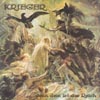 So I went and bought the new Krieger CD-R since it's presented byRasthof Dachau, and I was a fan of their first rythmic powerelectronics LP entitled "Blut Und Boden." And holy shit, did i waste mymoney. There is absolutely nothing worthwhile to this release, as it'sjust a bunch of shitty orchestral samples over some equally shitty darkambient soundtrack with some German vocals, and at some point what ismost likely the rambling of some white supremicist talking over it. Andno, I can't describe the disc any further, because that's what thewhole damn thing sounds like. But no matter how bad I tell you it is,some of you are still going to buy it. "Why?" you ask? Because RasthofDachau are like cool and they like put out some split video withGenocide Organ. Since I can't even find out who the hell the artist is,I'm convinced this is really Genocide Organ under a pseudonym. We allknow those 30 year old, misogynist, virgin, it-loving, noise recordcollectors still living in their mom's basement need to own this andsimply can't live without it, so they'll pay ridiculous prices on ebay.Mr. Dachau is laughing all the way to the bank with this fine waste ofplastic. The only decent thing I can say about this is that at least itdoesn't have any artwork with dead bodies, raped women, orholocaust-related motifs that are prevalent in this oh-so-wonderfulpower noise genre. In an ideal world, I'd be able to tell whether ornot a CD is good just by its cover art, and in this case, the covershould have had some shit-fetishist defecating into his mother's mouthso I could get a taste of what this CD is all about.
So I went and bought the new Krieger CD-R since it's presented byRasthof Dachau, and I was a fan of their first rythmic powerelectronics LP entitled "Blut Und Boden." And holy shit, did i waste mymoney. There is absolutely nothing worthwhile to this release, as it'sjust a bunch of shitty orchestral samples over some equally shitty darkambient soundtrack with some German vocals, and at some point what ismost likely the rambling of some white supremicist talking over it. Andno, I can't describe the disc any further, because that's what thewhole damn thing sounds like. But no matter how bad I tell you it is,some of you are still going to buy it. "Why?" you ask? Because RasthofDachau are like cool and they like put out some split video withGenocide Organ. Since I can't even find out who the hell the artist is,I'm convinced this is really Genocide Organ under a pseudonym. We allknow those 30 year old, misogynist, virgin, it-loving, noise recordcollectors still living in their mom's basement need to own this andsimply can't live without it, so they'll pay ridiculous prices on ebay.Mr. Dachau is laughing all the way to the bank with this fine waste ofplastic. The only decent thing I can say about this is that at least itdoesn't have any artwork with dead bodies, raped women, orholocaust-related motifs that are prevalent in this oh-so-wonderfulpower noise genre. In an ideal world, I'd be able to tell whether ornot a CD is good just by its cover art, and in this case, the covershould have had some shit-fetishist defecating into his mother's mouthso I could get a taste of what this CD is all about.
Read More
- Administrator
- Albums and Singles
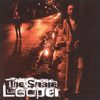 Whether you think you have or not, you've heard Looper. The sideproject turned main project of Stuart David, departed bass player oftwee rock outfit Belle and Sebastian, Looper have had music featured incommercials and films - 'Mondo '77' from their 2000 offering "TheGeometrid" was a featured track in Cameron Crowe's disastrous "VanillaSky". The band is essentially David, his wife Karn, and his littlebrother Ronnie Black. On this album, however, Looper's first for MuteRecords, it would seem that David has a few other collaborators whohave changed the landscape for Looper forever. The album was inspiredby David's second novel, "The Peacock Manifesto", and - as a partialsettlement of authorship disputes over the novel between David and hismain character Peacock Johnson - the album "features" Peacock andsaxophonist Evil Bob. Whether or not these two exist as more than apublicity vehicle for the new record remains to be seen. However, their"presence" has altered Looper into a noir film soundtrack band with andR&B heart. So, now, whether you've heard Looper or not, you'venever heard Looper like this. "The Snare" is an homage to darkerunderbellies - a dance version of Glen Campbell's "Rhinestone Cowboy",the aim of Peacock Johnson, it isn't. It's far removed from Looper'spoppier fare from first track to the last. It's Looper's seemingtribute to modern music by way of earlier influences. That's right:it's like Looper making an album with Missy Eliott. With the Davidssinging. I know, the description sounds bad. And the record isn't thebest thing Looper have done. In fact, it just smacks of "We know we'vebeen pretty disposable up until now, so here's a more mature album forya!" The whole album has the same drum sound, the same vocals, the samebass sound. It's meant to be a concept album where all tracks tietogether, but they only contain the same elements. There appears to beno growth from previous releases. In fact, the only track that holdsany promise is the final one, 'Fucking Around', and that's because itsounds vaguely like David's time with Belle and Sebastian. I'd give itthe whole record a pass, really, but try it out because it might beyour bag, man.
Whether you think you have or not, you've heard Looper. The sideproject turned main project of Stuart David, departed bass player oftwee rock outfit Belle and Sebastian, Looper have had music featured incommercials and films - 'Mondo '77' from their 2000 offering "TheGeometrid" was a featured track in Cameron Crowe's disastrous "VanillaSky". The band is essentially David, his wife Karn, and his littlebrother Ronnie Black. On this album, however, Looper's first for MuteRecords, it would seem that David has a few other collaborators whohave changed the landscape for Looper forever. The album was inspiredby David's second novel, "The Peacock Manifesto", and - as a partialsettlement of authorship disputes over the novel between David and hismain character Peacock Johnson - the album "features" Peacock andsaxophonist Evil Bob. Whether or not these two exist as more than apublicity vehicle for the new record remains to be seen. However, their"presence" has altered Looper into a noir film soundtrack band with andR&B heart. So, now, whether you've heard Looper or not, you'venever heard Looper like this. "The Snare" is an homage to darkerunderbellies - a dance version of Glen Campbell's "Rhinestone Cowboy",the aim of Peacock Johnson, it isn't. It's far removed from Looper'spoppier fare from first track to the last. It's Looper's seemingtribute to modern music by way of earlier influences. That's right:it's like Looper making an album with Missy Eliott. With the Davidssinging. I know, the description sounds bad. And the record isn't thebest thing Looper have done. In fact, it just smacks of "We know we'vebeen pretty disposable up until now, so here's a more mature album forya!" The whole album has the same drum sound, the same vocals, the samebass sound. It's meant to be a concept album where all tracks tietogether, but they only contain the same elements. There appears to beno growth from previous releases. In fact, the only track that holdsany promise is the final one, 'Fucking Around', and that's because itsounds vaguely like David's time with Belle and Sebastian. I'd give itthe whole record a pass, really, but try it out because it might beyour bag, man.
samples:
Read More
- Administrator
- Albums and Singles
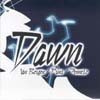 Fennesz 'Endless Summer' was the big across board hit of last year,obviously much more interesting in it's original invention thanRadiohead's thinly veiled Elton John impressions or Bjork's vaudevillesugar puff powderings. 'Endless Summer' appealed to blandpiggys andnoizheds alike and it was quite interesting to see the diverse music itrubbed shoulders with in all those yearend bestlisten lists. Fenneszstays visible with ever more recordings of varied live encounters, andalthough I haven't yet heard his Mika Vainio collaboration that got aslating from Nate Smith a couple of months back, I've always foundthat, like Otomo Yoshihide, for Fennesz quantity does not negatequality. This three way improvisation, recorded late in 2000, takes aclassic improvisation approach, in as much as AMM could be consideredclassic, but these artists are daubing from a very distinctive noisepallet. There are some very obvious similarities to AMM in the way theyslowly build up morphing dense layers from almost nothing, sewing inoccasional hacked fragments of radiopops. Fennesz might have started itwith a sampled fractious descending piano run, but then again itcould've been Gert-Jan Prins' kick off, or perhaps Van Bergen wasactually playing a piano? The haunting beauty unfolds fromradiocaptures and junk contraptions complimenting the familiar Fenneszgentle guitarshift distortion textures for Peter Van Bergen'sunderstated but understanding saxophone to unwind around, blurtingcamouflaged in strange new ruptured lung distortion fractions. Aquarter hour in he fires off some almost classic free jazz moves thatquickly get torn apart by effects and spat back into the whirling void,all mangled and digidiminished. Whilst the prospect of having to switchthe blip-attention spans on to a single forty two minute track mightput off some blandpiggys, and noizheads might make gripewater out ofthe ever dipping levels and relatively reflective yet murky pools hereand there, this is definitely more than just a worthy and curiousaddition to the ever expanding Fennesz ouevre. The crescendo at aroundthe half hour point is top notch liberating primal freenoise, piling upvariegated deep drones to breaking point. They drop down again to letpiano patter and metal chimes ring over the digisplutter and zoom focuslens splatter squeals but it builds again to a warped summer ending.These noisemakers play it organic, so that it becomes difficult toseparate any individual chaos panic. They also bring an intuitiveunderstanding of electro-acoustic sudden shock echoblam to theirconstantly mutating crunchy evolution. 'Dawn' makes me curious to hearmore from Van Bergen and especially Prins, whose noise patchwork freeskronking with Lee Ranaldo made for a surprising Radio 3 highlight acouple of years back, a recording which was made on a night when I wasacross London town listening to Wire. Sometimes it seems there's somuch happening you just need to split yourself in two to experience itall, which makes me glad that Fennesz makes these recordings of livesituations. When the sun rises, I will listen.
Fennesz 'Endless Summer' was the big across board hit of last year,obviously much more interesting in it's original invention thanRadiohead's thinly veiled Elton John impressions or Bjork's vaudevillesugar puff powderings. 'Endless Summer' appealed to blandpiggys andnoizheds alike and it was quite interesting to see the diverse music itrubbed shoulders with in all those yearend bestlisten lists. Fenneszstays visible with ever more recordings of varied live encounters, andalthough I haven't yet heard his Mika Vainio collaboration that got aslating from Nate Smith a couple of months back, I've always foundthat, like Otomo Yoshihide, for Fennesz quantity does not negatequality. This three way improvisation, recorded late in 2000, takes aclassic improvisation approach, in as much as AMM could be consideredclassic, but these artists are daubing from a very distinctive noisepallet. There are some very obvious similarities to AMM in the way theyslowly build up morphing dense layers from almost nothing, sewing inoccasional hacked fragments of radiopops. Fennesz might have started itwith a sampled fractious descending piano run, but then again itcould've been Gert-Jan Prins' kick off, or perhaps Van Bergen wasactually playing a piano? The haunting beauty unfolds fromradiocaptures and junk contraptions complimenting the familiar Fenneszgentle guitarshift distortion textures for Peter Van Bergen'sunderstated but understanding saxophone to unwind around, blurtingcamouflaged in strange new ruptured lung distortion fractions. Aquarter hour in he fires off some almost classic free jazz moves thatquickly get torn apart by effects and spat back into the whirling void,all mangled and digidiminished. Whilst the prospect of having to switchthe blip-attention spans on to a single forty two minute track mightput off some blandpiggys, and noizheads might make gripewater out ofthe ever dipping levels and relatively reflective yet murky pools hereand there, this is definitely more than just a worthy and curiousaddition to the ever expanding Fennesz ouevre. The crescendo at aroundthe half hour point is top notch liberating primal freenoise, piling upvariegated deep drones to breaking point. They drop down again to letpiano patter and metal chimes ring over the digisplutter and zoom focuslens splatter squeals but it builds again to a warped summer ending.These noisemakers play it organic, so that it becomes difficult toseparate any individual chaos panic. They also bring an intuitiveunderstanding of electro-acoustic sudden shock echoblam to theirconstantly mutating crunchy evolution. 'Dawn' makes me curious to hearmore from Van Bergen and especially Prins, whose noise patchwork freeskronking with Lee Ranaldo made for a surprising Radio 3 highlight acouple of years back, a recording which was made on a night when I wasacross London town listening to Wire. Sometimes it seems there's somuch happening you just need to split yourself in two to experience itall, which makes me glad that Fennesz makes these recordings of livesituations. When the sun rises, I will listen.
Read More
- Administrator
- Albums and Singles
 This collection of three sessions shows a group evolving from a whisper to (less a scream, than) the ghost of a mumble. Movietone’s introspective sound is naturally overlooked in a society which places more value on action, fast talking, and loudness. Their music remains elusive to define and to grasp, with a vocal style, choice of instruments, and an arm’s length embrace of folk and improvisational jazz which sets them apart, even from such contemporaries as Third Eye Foundation and Flying Saucer Attack in the post-rock branch of (what can loosely be termed) the Bristol post-rock "scene." The best of their work might be described by the verse (Peter 3:4) "let your adorning be the hidden person of the heart with the imperishable beauty of a quiet spirit."
This collection of three sessions shows a group evolving from a whisper to (less a scream, than) the ghost of a mumble. Movietone’s introspective sound is naturally overlooked in a society which places more value on action, fast talking, and loudness. Their music remains elusive to define and to grasp, with a vocal style, choice of instruments, and an arm’s length embrace of folk and improvisational jazz which sets them apart, even from such contemporaries as Third Eye Foundation and Flying Saucer Attack in the post-rock branch of (what can loosely be termed) the Bristol post-rock "scene." The best of their work might be described by the verse (Peter 3:4) "let your adorning be the hidden person of the heart with the imperishable beauty of a quiet spirit."
There is a long list of artists that made better versions of their songs for John Peel’s radio program than they did for their own albums. Whether this stems from the urge to impress the great man or the liberated feeling of getting away from their normal environs, everyone from Ivor Cutler, Echo & The Bunnymen, Billy Mackenzie, Microdisney, and The Smiths is on that list; which I am now reminded includes Movietone. Things commence here with the somnambulant terrain of "Mono Valley" and whispered vocals very low in the mix. This is voice as synthetic mood hiss rather than conveyor of words. A tension builds which is released by bits of noise: the sound of bottles being smashed, glass shards strewn, then squalling saxophone, sliced jabs of guitar, and discordant piano, all crashing in at intervals. It reminds me of the added background effects on a couple of pieces on Joy Division’s Unknown Pleasures.
Movietone's progression is well documented by these sessions. "Chocolate Grinder" resembles the noise of a band of toy instruments following a slinky bass line beneath a nocturnal urban wasteland, it’s if they have upped sticks to the Parisian catacombs to fiddle around with jazz instruments while repairing a washing machine; the pace and volume are increased a bit around the midpoint of its six minute duration but it never goes into overdrive—like a car ride at night down the M5 to Bristol while closely observing the speed limit. "Summer" is a slight but delightful track, the instrumental equivalent of a pastoral-hued poem read by a girl (modest, beautiful, and ordinary) who sits in the corner of the kitchen at a party having avoided eye contact with everyone. "Stone" is a wilder screech of a song, as tension again is released "and all we ever wanted, is here." While it’s a joy to actually be able to hear the words on "Darkness Blue Glow," they do seem less important than the sound of the voice. "Heatwave Pavement" stumbles along down an ordinary street, with coughs, mumbled snippets pieces of verse "beautiful…ending..tent..street.. and, now raining again...it was like the Mediterranean...a black rock...the tide… compose my mind...the music...have to do..the image..sitting there..people’s voices, people smiling...it was nice."
"Hydra" is the major highlight here, and in the group’s entire discography. Brisk, taut, a swinging mood of a type that could almost be jazz yet clearly is not, and of course its exact meaning remains obscured beneath a loosely sketched depiction of a beach. The group were standing apart from other kinds of music, in part by choosing and sticking to their own codes of expression. Much like Disco Inferno would do a few years later. This honing of identity, of a distinctive sound where tiny deviations can then seem like a big departure, is a strength rather than a flaw. Movietone's music is a quiet rebellion, regardless of how big a splash it made, or how many influential ripples can be noted. This rebellion is similar in tone to Alvin Curran’s brilliant Songs and Views From the Magnetic Garden. I have heard said that the group methodology contains devices used in the making of cinema vérité, to depict reality with an unadorned quality, found say in the films directed by John Cassavetes, wherein (if I understand correctly) the plot is only as important as having the participants appear as if they are not actors. There is a recognizable power is that achievement which can almost be felt on another of the best of these session tracks: "Blank Like Snow" carries a poignant ache that is attached to the creativity of those who insist on retaining the status of ordinary, everyday, people. We hear their music, and it can at times be transcendent, but we can also feel them having their cups of tea, wearing their secondhand clothes from Oxfam, reading the same books and watching the same films or television series as the rest of us. And with Movietone, the sonic palate of their songs is similar to a real design classic: Ordnance Survey maps - which show every church, ditch, hillock, footpath, phone box, road, rock, ruin, stile, and weir, in an ultra-detailed depiction of a small area.
Read More
- Administrator
- Albums and Singles
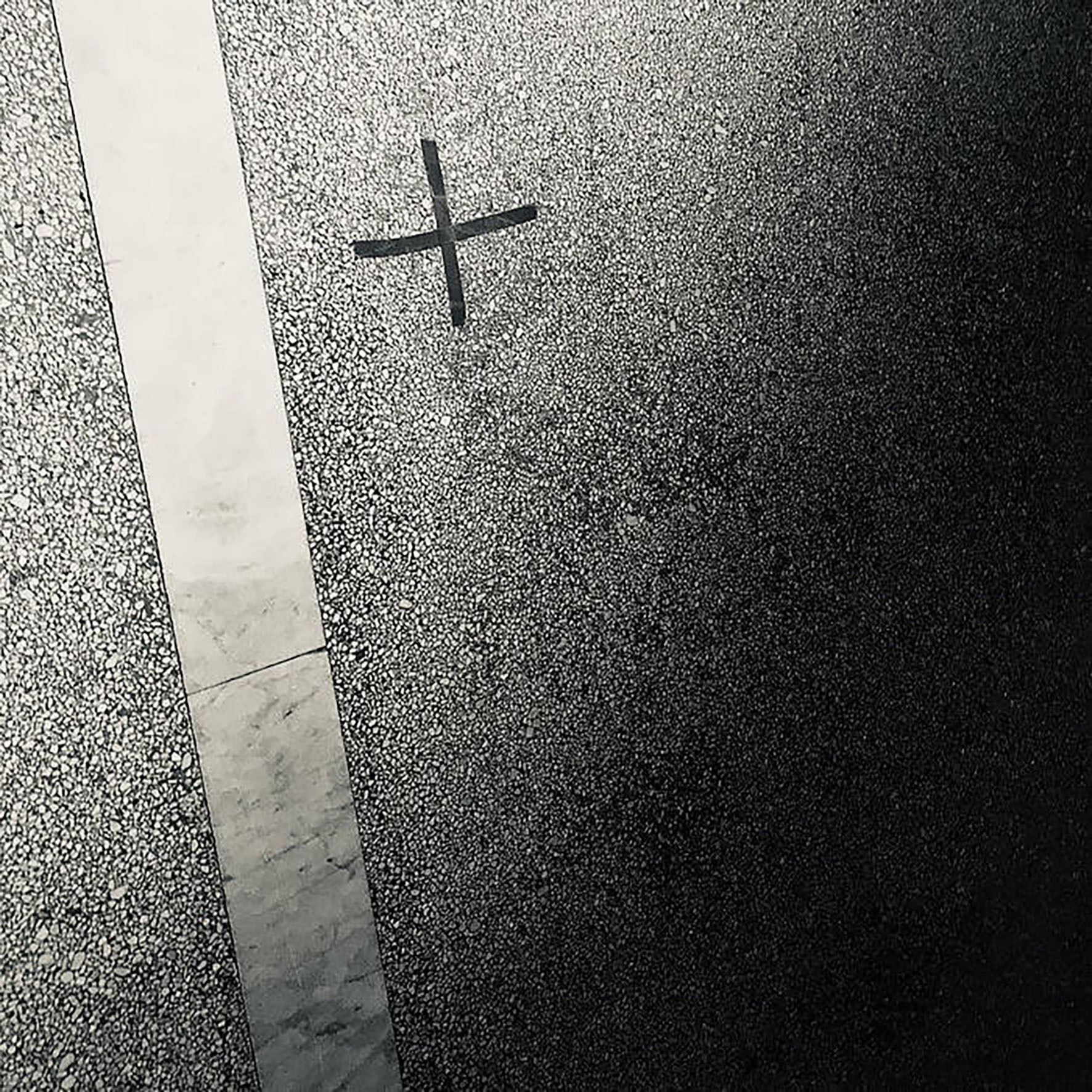
Now complete, Dunn's sprawling and epic "The Cohesive Redundancies" series takes the composer's love of massive statements to its logical extreme (and perhaps even beyond it).  Spanning four albums of wildly varying lengths, Dunn's sustained examination of "futility and beauty" feels somewhat reminiscent of The Caretaker's "Everywhere at the End of Time" series, as each section feels like a deeper stage of deterioration and mutation than the previous one. Given that, the first installment of the series is the one that will most appeal to fans of Dunn's usual distinctive ambient/drone fare, but listeners amenable to more radical sound art will find the rest of the series to be quite a fascinating (and oft-challenging) rabbit hole to explore as well. In fact, it is even a challenge to determine which album is the most dramatic outlier in Dunn's oeuvre, as the series alternately delves into tender piano elegy (TCR: Deuxième), an extended deconstruction and reworking of a single piece ("Fantasia on a Theme of Affection") from TCR-P1 with collaborator Simon Stader (TCR III), and an '80s Italian noise tape and Giallo-inspired cannibalization by Thomas A. Brust (TCR IV). That said, Brust's contribution is quite something indeed, clocking in at a confrontationally monolithic four-hour tour de force of cold and blackened industrial-damaged drones.
For the sake of simplicity, it is useful to divide this overwhelming opus into two categories: the melodic/expected side of Kyle Bobby Dunn and the radical deconstruction of Kyle Bobby Dunn (I am surprised that the latter has not been an album title yet). It is still quite a challenge to make any general statements about this series, however, as even the first two installment are wildly different from one another, but listeners merely hoping for Dunn’s usual brand of sublime ambient will not want to venture any further than the first installment (reviewed separately here). It is admittedly a bit more "durational" than some of the composer's previous fare (the album's drifting and dreamlike centerpiece clocks in at nearly an hour), but it is a strong stand-alone album that checks nearly every box of my personal "classic KBD drone" checklist: an elegantly minimal processed guitar theme lazily winding across a stark and somewhat cool backdrop of lingering haze, tape hiss, room tone, and enigmatic buried sounds (it is no coincidence that Dunn lists "mic placement" among his instrumental credits). The "redundancy" bit of "The Cohesive Redundancies" starts to sneakily manifest itself with the surprisingly brief Deuxième, which Dunn describes as a "somber piano epic for the late and lovely Joni Sadler" (a fellow Montreal artist in the Constellation milieu). "Threnody for Joni" is an unusual piece for Dunn, as it calls to mind a version of Harold Budd that is stretched and dissolved into a semi-ambient haze. While I have no idea if "Threnody" literally blossomed forth from one of the pieces on TCR P-1, it at least feels like an expansion and evolution of the Budd-like passages in "Pavane for the Internal Monologue."
When the colder, industrial-tinged thrum of the third installment's "Hamstrung at Heathrow Airport Horn Suite" arrives, however, things veer decisively into more unexpected and unusual territory and only get darker and more gnarled from there.As Dunn puts it, Stader's transformations examine "sadness and suffering in more brutal detail" and "take variants from the previous sessions to create new works."In more concrete terms, it is an unrepentantly challenging album that demands almost superhuman patience from listeners, as TCR III's four pieces are chilled, aggressively minimal, and glacial in pace, but they can also be quite beautiful in a bleak way.My favorite piece is "Complex Illumination on a Theme (variante automnale)," which my notes alternately describe as "grainy dreamlike billowing with a bit of sizzle," "slow-motion breaking waves," and "fluttering and flickering ghosts trapped inside a single frayed and dissolving drone." Other pieces call to mind a slowly burning incense stick, a shimmering fog rolling across a windswept prairie, or the slow/durational cinema of James Benning.Admittedly, it takes some time to adapt to the near-geologic time scale, but acquired tastes can offer deeper pleasures than lower hanging fruit and I would say that is true of TCR III: someone, somewhere will likely emerge from the album with a blown or at least permanently reconfigured mind.Dunn, of course, did not stop decide to stop with that dark horse contender for best album in the series though.Consequently, we also have the certain-to-be-polarizing TCR IV.
I personally still have no idea what to make of the series' massive final installment, as I certainly enjoy its grimy and lurid Italian inspirations, yet generally enjoying an aesthetic and wanting an overwhelming four-hour dose of said aesthetic are different things altogether.Then again, maybe they are not, as TCR IV features two or three pieces that unexpectedly transform into something quite good after 10, 20, or sometimes even 30 minutes of noisily droning near-statis.It almost feels like Brust decided to willfully alienate every last weak-willed or impatient listener before unveiling all the cool shit (an endearing move, if true).Do the extreme durations make the payoffs more satisfying?I honestly have no idea, but pieces like "In the Dead of Night Thru the Vast St. Mary" definitely get somewhere compelling if I am willing to stick around long enough.Beyond that, TRC IV will hold a lot of appeal for anyone craving the sounds of a KBD album being bulldozed by a harsh noise set.I cannot say I was craving that myself, yet there are plenty of rewarding moments that call to mind a contact mic’d biplane smashing into the ground in extreme slow motion, a dub remix of an earthquake, or someone tenaciously adjusting the tracking on a VCR in hopes that a more melodic piece will emerge.Regardless of how much I will ultimately warm to the unrecognizably ravaged mutations of the third and fourth installments, "The Cohesive Redundancies" is one hell of an admirable achievement.It is probably is not the series of albums that anyone knew they wanted, but that is how great art works: something novel smacks me in the face and I am then forced to reevaluate what I thought I knew and liked.This series may be an exhausting and prickly artistic statement, but it is also a wildly ambitious, bold, and mostly successful one as well.
Samples can be found here.
Read More
- Administrator
- Albums and Singles
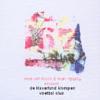 The Legendary Pink Dots' horn player Niels Van Hoorn and Mark Spybey ofDead Voices On Air have been collaborating for a few years now. Neilshas contributed to DVOA live sets, the 'Frankie Pett' album and theSpybey / Mick Harris disc 'Bad Roads, Young Drivers' disc. But thisproject, created while Spybey was a resident of the Van Hoorn householdin The Netherlands, puts the focus almost entirely upon Niels - hishorn playing as well as the various sounds to be found and made amongstthe pastoral riverside setting he calls home. All of this is, ofcourse, thoroughly digitally processed by Spybey, so much so that halfof the 54 minutes passes before a sound typical of a horn is heard. Butthe atypical is just as welcome here as the possibilities of the hornplaying are explored. After a few listens, I've become as fascinated asSpybey is with the sounds he has gathered and shaped. In the extensiveliner notes he explains the process involved for each track, howexactly he recorded Niels or what exactly we're hearing, such as micescurrying about the barn, a power generator, Niels welding, riverboats, distorted raindrops, an old jazz record, etc. Most of the trackssimply, slowly, quietly flow - presumably like the nearby river Waal -the music being something pleasantly in-between melodic and abstract."South Side Style", "Empress of the Blues" and "Stockyard Strut" arelittle more than beautifully melancholy flute, tenor and baritone saxphrases, respectively. A couple of tracks are a bit more mischievous."Jelly Lord" is a backwards, overdriven horn anthem for the Land ofClover, darkly underpinned by nearing thunderstorms. And "Scrapper Boy"erupts into a buzzing machine drone akin to Mika Vainio's solo work.Spybey and Van Hoorn have created not only a souvenir of a time andplace of their friendship, but a really lovely soundtrack for others toshare in. 'Klaverland' might just end up on my best of 2002 list.
The Legendary Pink Dots' horn player Niels Van Hoorn and Mark Spybey ofDead Voices On Air have been collaborating for a few years now. Neilshas contributed to DVOA live sets, the 'Frankie Pett' album and theSpybey / Mick Harris disc 'Bad Roads, Young Drivers' disc. But thisproject, created while Spybey was a resident of the Van Hoorn householdin The Netherlands, puts the focus almost entirely upon Niels - hishorn playing as well as the various sounds to be found and made amongstthe pastoral riverside setting he calls home. All of this is, ofcourse, thoroughly digitally processed by Spybey, so much so that halfof the 54 minutes passes before a sound typical of a horn is heard. Butthe atypical is just as welcome here as the possibilities of the hornplaying are explored. After a few listens, I've become as fascinated asSpybey is with the sounds he has gathered and shaped. In the extensiveliner notes he explains the process involved for each track, howexactly he recorded Niels or what exactly we're hearing, such as micescurrying about the barn, a power generator, Niels welding, riverboats, distorted raindrops, an old jazz record, etc. Most of the trackssimply, slowly, quietly flow - presumably like the nearby river Waal -the music being something pleasantly in-between melodic and abstract."South Side Style", "Empress of the Blues" and "Stockyard Strut" arelittle more than beautifully melancholy flute, tenor and baritone saxphrases, respectively. A couple of tracks are a bit more mischievous."Jelly Lord" is a backwards, overdriven horn anthem for the Land ofClover, darkly underpinned by nearing thunderstorms. And "Scrapper Boy"erupts into a buzzing machine drone akin to Mika Vainio's solo work.Spybey and Van Hoorn have created not only a souvenir of a time andplace of their friendship, but a really lovely soundtrack for others toshare in. 'Klaverland' might just end up on my best of 2002 list.
samples:
Read More
- Administrator
- Albums and Singles
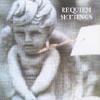 The Silverman is keyboardist Phil Knight, a founding and current memberof The Legendary Pink Dots. This is his third solo album following upon 1995's 'Dream Cell' for Terminal Kaleidoscope and 1998's'Silvermandalas', also for Soleilmoon. Like the latter, this disc issimply comprised of numbered parts, in this case six interconnectedtracks ranging from two to nearly 13 minutes in length. The title isperfect as the album was motivated by the death of his father and theplaces Knight lived and visited while working upon it. Each setting isunique and incorporates found as well as synthesized sounds. Part onefeatures ghostly metallic bell tones amidst a dense, shifting fog. Twomoves into a more electronic territory as a sequence of synth notes,waves and background bass bumps plays out. Three glistens as a dulcimerand subdued electronics dance with an elegant array of winter soundssuch as crumpled snow, cracked ice and water. It's really something howit gracefully slips in and out of consciousness. Four and five arebrief interludes of mechanical whirrings, swooping tones, more bells,rain (or maybe fire) and birdsong. And six is the requiem itself.Steady synth voices become masked by wind and the sounds of trains,evoking cross country movement as well as sorrow. Much like DavidTibet's homage to his departed father, Current 93's 'Sleep Has HisHouse', The Silverman has respectfully paid tribute to his own fatherwith a very lovely album, his best yet.
The Silverman is keyboardist Phil Knight, a founding and current memberof The Legendary Pink Dots. This is his third solo album following upon 1995's 'Dream Cell' for Terminal Kaleidoscope and 1998's'Silvermandalas', also for Soleilmoon. Like the latter, this disc issimply comprised of numbered parts, in this case six interconnectedtracks ranging from two to nearly 13 minutes in length. The title isperfect as the album was motivated by the death of his father and theplaces Knight lived and visited while working upon it. Each setting isunique and incorporates found as well as synthesized sounds. Part onefeatures ghostly metallic bell tones amidst a dense, shifting fog. Twomoves into a more electronic territory as a sequence of synth notes,waves and background bass bumps plays out. Three glistens as a dulcimerand subdued electronics dance with an elegant array of winter soundssuch as crumpled snow, cracked ice and water. It's really something howit gracefully slips in and out of consciousness. Four and five arebrief interludes of mechanical whirrings, swooping tones, more bells,rain (or maybe fire) and birdsong. And six is the requiem itself.Steady synth voices become masked by wind and the sounds of trains,evoking cross country movement as well as sorrow. Much like DavidTibet's homage to his departed father, Current 93's 'Sleep Has HisHouse', The Silverman has respectfully paid tribute to his own fatherwith a very lovely album, his best yet.
samples:
Read More
- Administrator
- Albums and Singles
 Philip Jeck always seems to surprise and surpass expectation every timeI hear him perform. I've heard him spin out haunting loops for avantgarde dancers to strut about to in art spaces. I've heard him spinstickered platters alongside guitarist Vergil Sharkya and fractalvideographer Gerd Willschvetz in an underground car park in Liverpool.I've heard his scaffolded ranks of old car boot turntables mash upcrackly memory traces from worn needles bumping into wires and stickersin a London gallery. I've heard him go walkabout at a festival opening,cutting up dictaphone recordings with the pause button. After hisambitious quartet of lengthily (r)evolving 'Vinyl Codas' released bythe Intermedium label, he returns to Touch with seven shorter liveexcerpts from performances in Liverpool, Manchester, Osaka, Tokyo andVienna. With only a single sample Casio keyboard to aid the junkyardturntables spinning varispeed deteriorating vinyl, he necessarilylimits his options but unlocks endless potentials from abundantalternate histories coded in the grooves. When he loops records at lowspeed, worn old cliches morph into haunting new textures. A phantasmalkeyboard hoot that forms the bedrock of "Pax" sounds like it might'vemorphed slowly from a cheesy old J. Geils Band charity shop hit."Above" cuts scratchy old vinyl into train chug clunks and chickensquawk with some slowed speech narration to explain what exactly isn'tgoing on. "Lambing" is a home recording, soundtracking a film by LucyBaldwyn, and wouldn't sound out of place on his previous Touch CD'Surf,' with groaning ghost vox repeating an eerie refrain over thecrackle'n'drone spin, until slowly a sunrise glow cracks dawn beneaththe locked groove rhythm faultlines. "Vienna Faults" waltz around likea music box in a tumble dryer. There's some crazily mangled sitar"Below," reversing into hollow metal hammering, cut dead by a suddendescending blues guitar riff. "Open" seems to rework familiar noisesfrom 'Surf' into a noisier delayed clatter. "Close" does just that,with some more sitar loops, more meditative but just as playful asbefore. Stray starry plucked fragments drop in at odd angles until aloop locks and deteriorates to a stutter as a single piano note bashesto infinity. A ghost choir of Hamaiian folk singers emerges from thevinyl crackle fog to bid a fond farewell. If you haven't heard PhilipJeck before, this is not his most immediate recording and 'Surf' or the'Vinyl Coda' series might be better ports of entry. He has not yet leftthe building.
Philip Jeck always seems to surprise and surpass expectation every timeI hear him perform. I've heard him spin out haunting loops for avantgarde dancers to strut about to in art spaces. I've heard him spinstickered platters alongside guitarist Vergil Sharkya and fractalvideographer Gerd Willschvetz in an underground car park in Liverpool.I've heard his scaffolded ranks of old car boot turntables mash upcrackly memory traces from worn needles bumping into wires and stickersin a London gallery. I've heard him go walkabout at a festival opening,cutting up dictaphone recordings with the pause button. After hisambitious quartet of lengthily (r)evolving 'Vinyl Codas' released bythe Intermedium label, he returns to Touch with seven shorter liveexcerpts from performances in Liverpool, Manchester, Osaka, Tokyo andVienna. With only a single sample Casio keyboard to aid the junkyardturntables spinning varispeed deteriorating vinyl, he necessarilylimits his options but unlocks endless potentials from abundantalternate histories coded in the grooves. When he loops records at lowspeed, worn old cliches morph into haunting new textures. A phantasmalkeyboard hoot that forms the bedrock of "Pax" sounds like it might'vemorphed slowly from a cheesy old J. Geils Band charity shop hit."Above" cuts scratchy old vinyl into train chug clunks and chickensquawk with some slowed speech narration to explain what exactly isn'tgoing on. "Lambing" is a home recording, soundtracking a film by LucyBaldwyn, and wouldn't sound out of place on his previous Touch CD'Surf,' with groaning ghost vox repeating an eerie refrain over thecrackle'n'drone spin, until slowly a sunrise glow cracks dawn beneaththe locked groove rhythm faultlines. "Vienna Faults" waltz around likea music box in a tumble dryer. There's some crazily mangled sitar"Below," reversing into hollow metal hammering, cut dead by a suddendescending blues guitar riff. "Open" seems to rework familiar noisesfrom 'Surf' into a noisier delayed clatter. "Close" does just that,with some more sitar loops, more meditative but just as playful asbefore. Stray starry plucked fragments drop in at odd angles until aloop locks and deteriorates to a stutter as a single piano note bashesto infinity. A ghost choir of Hamaiian folk singers emerges from thevinyl crackle fog to bid a fond farewell. If you haven't heard PhilipJeck before, this is not his most immediate recording and 'Surf' or the'Vinyl Coda' series might be better ports of entry. He has not yet leftthe building.
samples:
Read More

